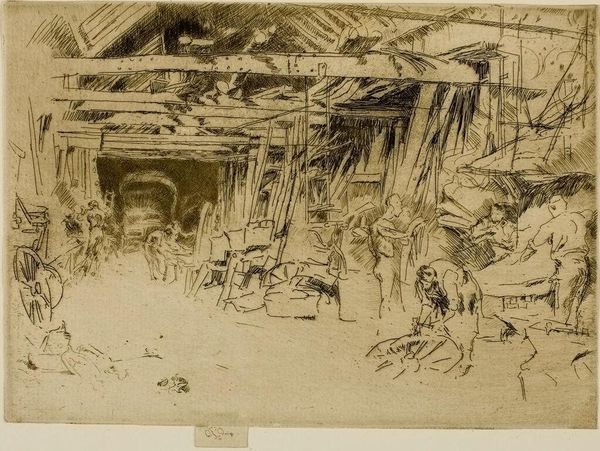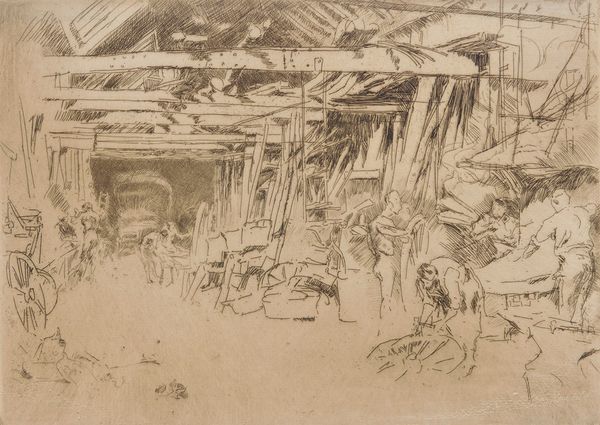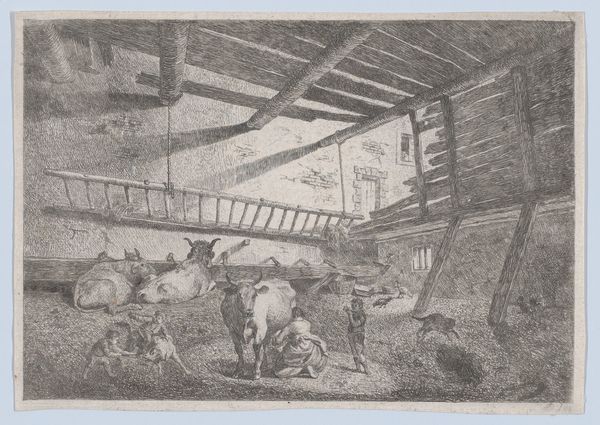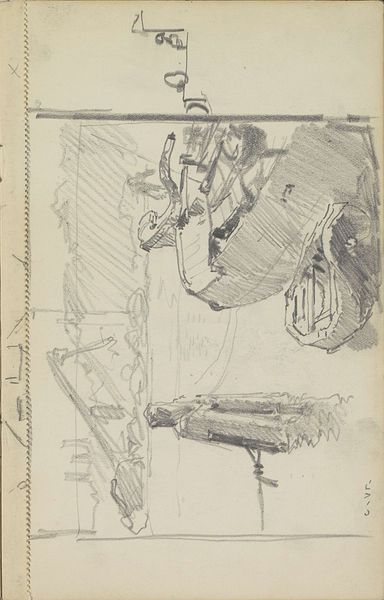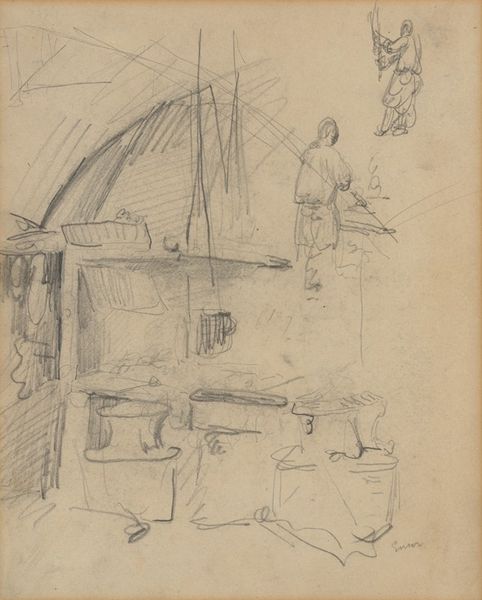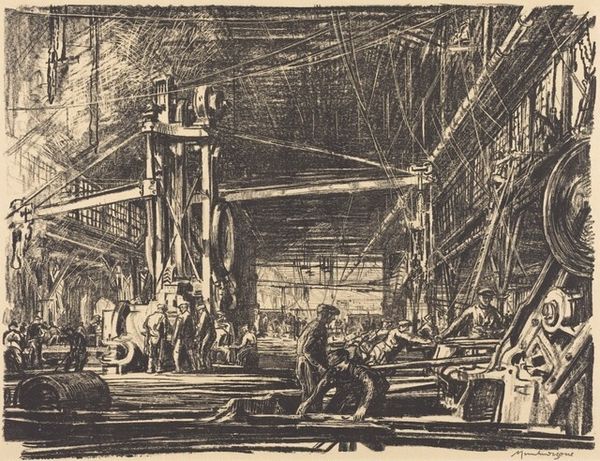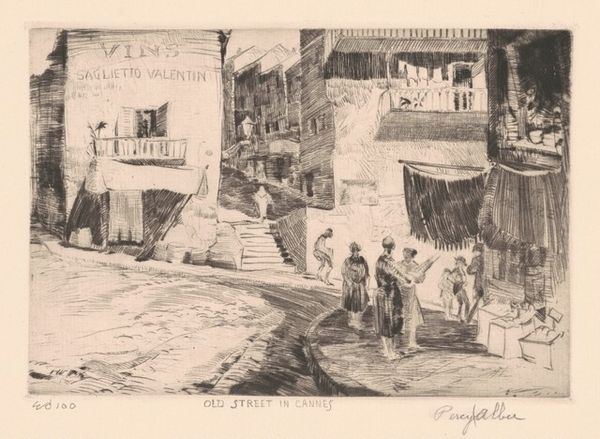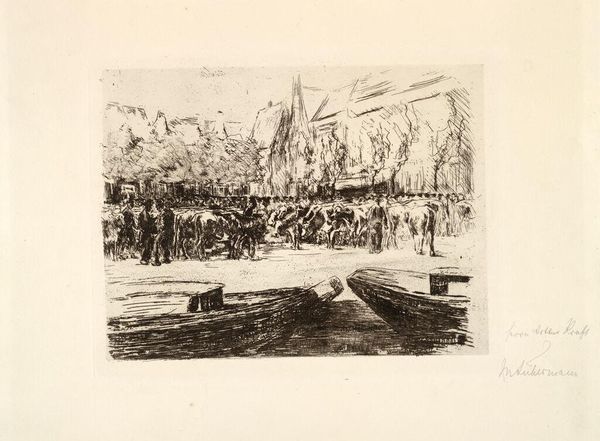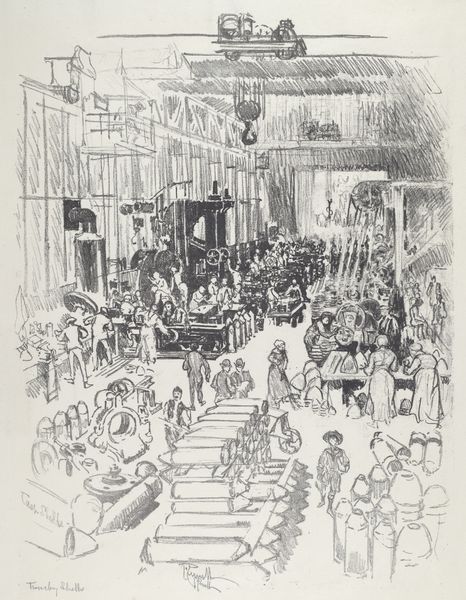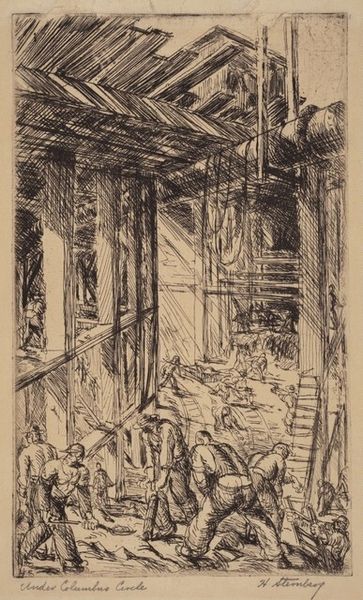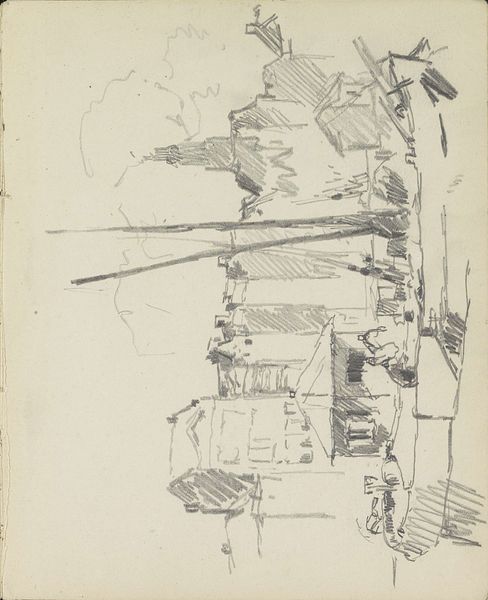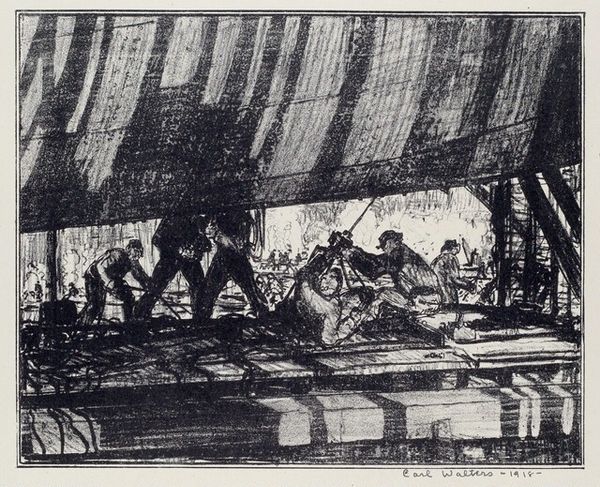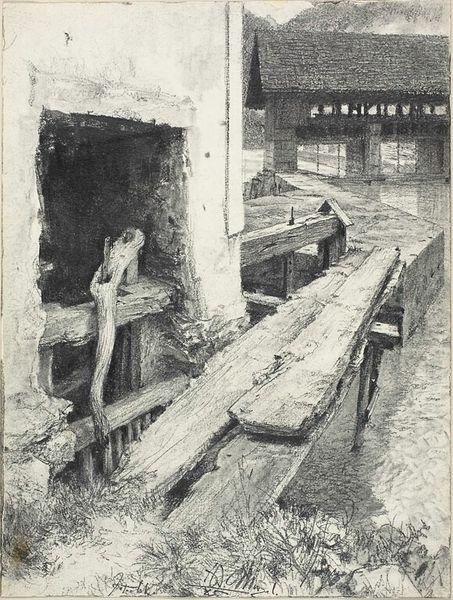
drawing, print, etching
#
drawing
# print
#
etching
#
cityscape
#
realism
Dimensions: Image: 269 x 221 mm Sheet: 335 x 310 mm
Copyright: National Gallery of Art: CC0 1.0
Curator: Emil Kosa Jr.'s etching and print, dating from 1920 to 1968, presents us with "Olivera Street." What's your first reaction to this cityscape? Editor: Immediately, I'm drawn to the street's narrative. It whispers stories of cultural exchange and the quiet observation of daily life. I detect a certain nostalgic melancholy, maybe due to the muted tones of the etching. Curator: The texture is definitely crucial. Look at how Kosa used varied line weights to suggest depth and form. The stark contrast of dark shadows and highlighted areas structures the entire composition and imbues it with movement. How do you read that in terms of your interpretation? Editor: The strong contrasts could also symbolize the chiaroscuro of cultures melding, the shadows representing unspoken traditions and the light, new encounters. The hat resting atop what looks like photography equipment—it reminds me of how visual symbolism anchors identity and becomes a means of cultural storytelling. Curator: An interesting angle, certainly. Formally, the receding perspective and the repetition of geometric shapes create a spatial recession that leads the viewer's eye deeper into the print, and it all guides one into considering the arrangement of masses and voids—those areas between figures and buildings. What symbols or symbolic acts strike you here? Editor: Well, I see the merchants gathered—an ancient scene symbolizing trade and community, resonating with cultural continuity across time. That lone figure in the foreground, he seems like an observer. Maybe the photographer embodies a cultural outsider seeking to understand, or perhaps exploit, a culture's traditions? Curator: The artist really utilized the material qualities of the medium itself—the fineness of the etched line, the subtly of the ink tone— to depict texture of stone and cloth. The work provides a glimpse of how art conveys cultural nuances and social interactions. Editor: And ultimately, art reflects, celebrates, and perhaps even gently mourns the layers of a society's narrative, all held within its familiar symbols and streetscapes. It resonates, still. Curator: Absolutely. It provokes thought about visual language, and challenges our reading of form as information about space, whether it's physical or cultural.
Comments
No comments
Be the first to comment and join the conversation on the ultimate creative platform.
